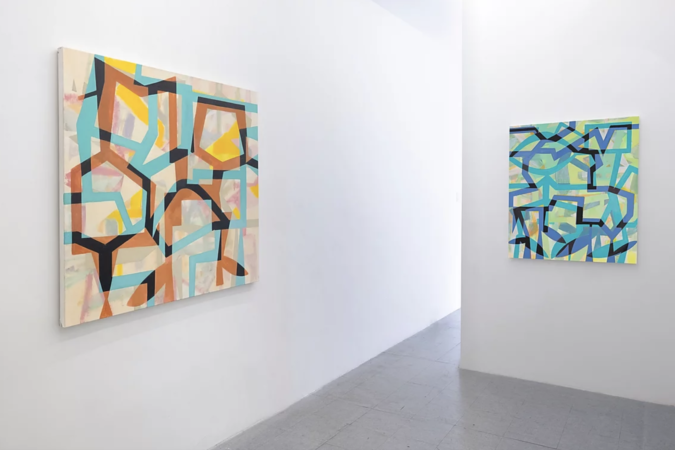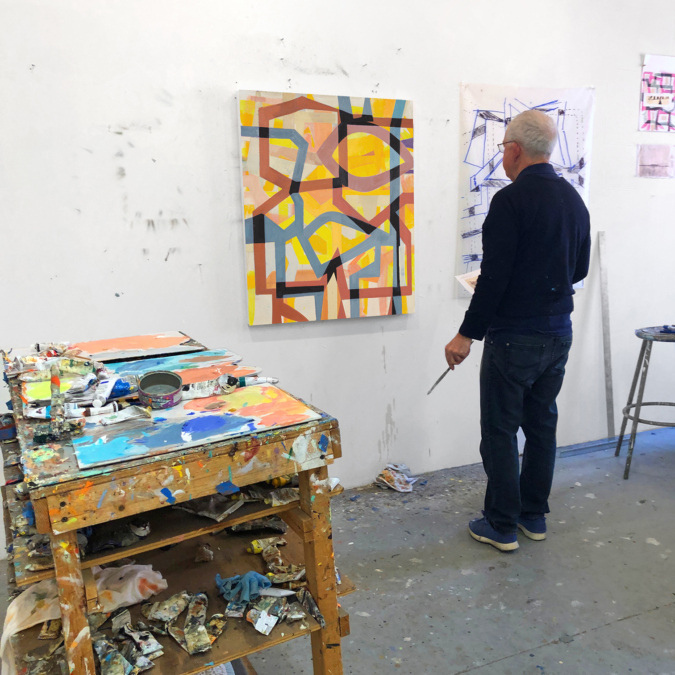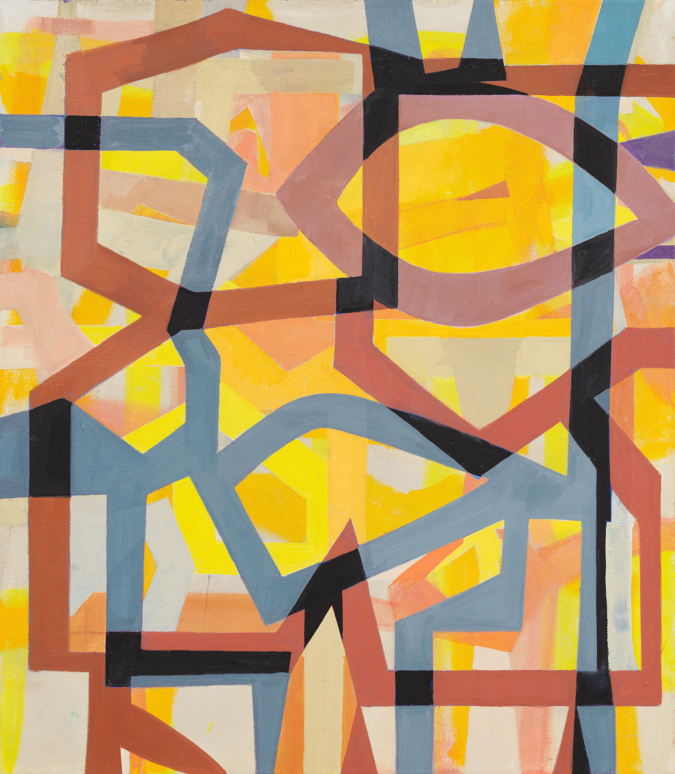Colin Thomson
Colin Thomson was born in London, England and moved to New York in 1955. He attended Lake Forest College, BA, 1971, The New York Studio School, 1972-1975, Skowhegan School of Art, 1974, and Yale University, MFA, 1977. He’s been included in multiple group shows and presented ten solo exhibitions in venues nationally and internationally. Thomson received a National Endowment for the Arts Fellowship in 1991-1992. Public and corporate collections include Albright-Knox Art Gallery, Centro Culturale, Arte Contemporaneo, Mexico City, Chase Manhattan Bank, Grey Art Gallery, New York University, M & T Bank, National Madison Group, Weatherspoon Art Gallery, and Wilkie, Farr & Gallagher. He has produced nearly 200 exhibitions over the past 40 years with museums and for museums as Director of the PaineWebber/UBS Art Gallery in midtown Manhattan.
QUESTION:
It’s clear when looking at your paintings that they are made in layers. Often it appears like the first layer and other under layers are not re-worked once a layer is painted over them. This means that you don’t know what a painting will look like until you paint the final layer. How do you deal with the process of not knowing, both practically and emotionally? How can you tell that an under layer is right when you don’t know what is going to be painted over it? Can you tell if an early layer is more “receptive” in one painting over another? How often do you go back into earlier layers to adjust them to the final layer?
ANSWER:
Good question, the short answer is -yes, I started using layers as a painting process about the seven years ago. The images undergo major changes with each additional layer, so I can’t really predict how things will turn out beforehand. I like it this way because it keeps the paintings open and full of surprise. My work has an element of chance creating a delay between hand-eye and how the final image appears.

(l) Tomb, 2019, Oil on Canvas, 48″ x 54″ – (r) Float, 2019, Oil on Canvas, 40″ x 34″
Practical skills are critical when you’re heading toward an unknown outcome. Mine are not computer based. I start with pencil on paper, then move the idea into watercolor to get a general feel for location and what’s happening in it.
After the ground has been roughed in, I’ll tape a sheet of clear glycine over the canvas and sketch out possible outcomes in magic marker. It’s a fast way to visualize the composition and see where the overlapping intersections and edges might be. Emotionally, I try to center on what’s working and follow it as best I can. Decisions about what gets saved – what gets covered come from a fairly unconscious and spontaneous place. I’m constantly on the lookout for a scale to join color and structure. When that appears, it gives me room to see the image and how its built. From that point on, the choices become much clearer.

Right now, I’m starting several canvases at the same time, letting one suggest moves on another, even sharing layers between them, like working in a sketchbook. I’m also painting into the ground after the linear structures appear as a way of being more deliberate about color and light.

Eye 2, 2019, Oil on Canvas 32 x 28 inches






I love the loose complexity of that painting “Eye”.
Nice, Collin!